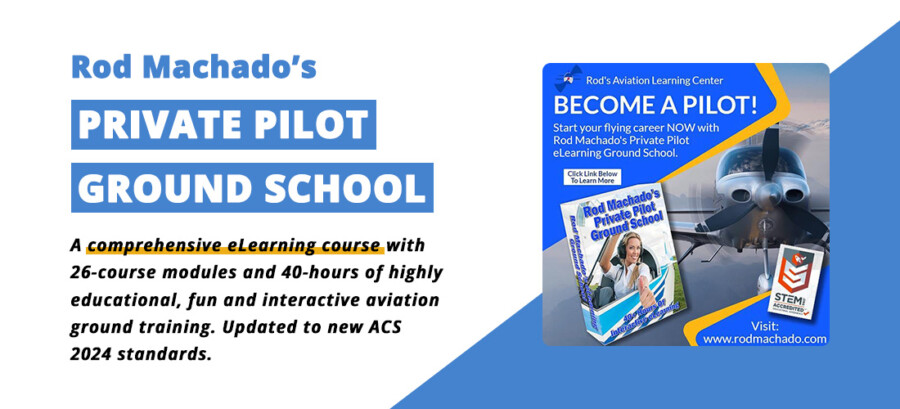Begin With the End in Mind
28 November 2017 | Updated on February 05, 2024
A big part of my function with my flight school, Flex Air, is being in charge of recruiting and student onboarding. This is honestly one of my most favorite aspects of my job, I absolutely LOVE working with people and helping them realize and achieve goals. That being said, I meet a lot of people who have been slacking on an actual training plan. For those interested in being a career pilot, there are some considerable obstacles in the way to get there.
It’s a great job, but it’s absolutely not an easily obtainable one. Things like money, medical issues, time commitments and access to training are things that need to be looked at before you start flight training- not during. I hear all the time that someone has “run out of money” or that they “don’t want to be a flight instructor” and are trying to find alternatives to paying for every hour. This seems to be counterintuitive in most senses. Running out of money or not having it to begin with is probably the #1 obstacle in aviation training today. For every ten students that do not go forward with flight training with us, six of them are stepping away for financial reasons. Yes, there are loans. Yes, there are scholarships, but education and training in 2017 is not cheap…if you want to walk away with the technical skills necessary to be a professional pilot, you are going to have to be able to pay for the training.
Disclaimer: More articles to come on *how* to pay, this article is more on flight training planning.
The thing I ask every single prospective student I meet is “where do you want to go?” Every prospective student should be asking this of themselves as well. I go through the legal steps such as “You’ll need to get to commercial for that” or whatever the case may be and try to line out what we could offer them as a training program. But here’s the deal–that’s only half of my meeting! Once you get your flight training, the reality is you won’t be able to get a job with low time 99% of the time, so depending on what you told me of where you want to go we’ll continue the conversation in how to get there.
Most of my meetings revolve around someone wanting to go to the airlines, and I’m sure most of you reading this are also looking towards that as a career option. That’s great! You already know you’ll need a commercial multi to get in the airlines, but what else do you need? Flight time, and how you get that is KEY in your training program. Getting your CFI in most cases is paramount for career progression, and you need to be budgeting it in your training plan. Even though your career goals might not actually include flight instruction, it’s the most effective way of getting to most of them. Unless you already have an “in” somewhere such as banner towing, aerial photography or skydiving, start planning on going all the way through a CFI program.
The other downside to some of these “low time” jobs is they are typically very seasonal. I don’t know a ton of jobs in general that will hire under 500 hours, but banner towing is a very popular one; however, those jobs are few and far between during the “off-season” which happens to be half of the year! You are going to take forever to get your hours just flying six months a year, so unless you’re content spending 3-4 years to work through the seasons to get your hours, you need to have another game plan.
Airlines typically only care about total time (as well as some breakdowns on PIC, CC, night, etc. but let’s not get lost in those details for this article). The faster you get those times, the faster they’re going to offer you a job. You can go straight from a 172 to an airline; it happens every day. So although I appreciate students wanting to be creative and actually get hired as a commercial pilot as a super low time pilot, if your goal isn’t a career banner towing pilot, I’d ask you, what’s the fastest and most cost-effective way to get you to where you want to be? Begin with the end in mind.
The airlines are hiring more than ever. Some are hiring 10% of their entire staffing every single month because upgrades are happening at such a high rate. Don’t believe me? Piedmont, for instance, has a total pilot count of 600-ish pilots, and right now their hiring goal is 40 pilots a month.
A CFI at a good school (not just talking about mine, there are some FANTASTIC CFI schools out there) will cost about $5-7k and take about a month. Just like the rest of your training and educational career, it’s an investment in your future, and an investment that will help you achieve your goals faster- especially if the airlines are your goal.

Now, what about people that don’t want to go to the airlines? I’m going to generalize and call it “corporate aviation,” so bear with me. In corporate, networking and turbine time are the two biggest keys to getting a job that you want. How do you get that? Get to about 500 hours and then start applying for internships. Some of the more coveted ones such as ATT or Desert Jet can be tough to get into if you’re not coming from a university, but training companies like Flight Safety and CAE have excellent internship opportunities. I personally did an internship at Flight Safety and can tell you my professional career flying a Citation Latitude is only because I had that internship. They not only give you excellent training, but give you the opportunity to meet their clients that come in there every week, and their clients are your potential employers. In six months there, I met more people than any networking event I’ve gone to, and I still fly side by side with a lot of the people that were clients when I was an intern.
Corporate still cares about total time, but a lot of smaller companies care more about the person. You’ll hear people say “we don’t hire a resume”. Reputation is everything to a pilot, and even more so in corporate aviation. It’s crazy how small of an industry this is. But within that, personality and diversity on the flight deck are becoming some of the biggest driving forces in corporate aviation- and the best way for them to know how great your reputation is, is through networking. If you’re wanting to go into corporate, at the beginning of your flight training start putting together some ideas for an internship and possibly even get a mentor.
There are excellent forums online–I personally am in love with the Aviation Career Mentorship group on Facebook. The people in it have been through a lot and it’s a very diverse group. Being pretty early in my career, I’ve found myself interacting within the group and with members of the group a lot for questions and guidance. Sometimes it’s even good to just be a fly on the wall and read the interactions within the group to see what is being discussed and see if it may be relevant to your career aspirations. Vet all information you see on the internet; pilots (including myself and even this article) are full of opinions. Try to fact find and come up with your own truth, but do not deceive yourself. Have an honest approach to achieving your goals and begin with the end in mind.
I’m not trying to make this article about forcing everyone into getting their CFI. I just want every student to have a solid plan on achieving their goals. There is typically a gap between graduating from a training program and their initial industry goal, so you should have a solid plan on what you’ll be doing during that gap. The industry is on a huge uptick, and I want you to take advantage of it–get in and get it done. You can be at an airline or corporate job in 2-3 years from starting flight training. Line out a training plan, ask for help, google google google and then execute. Do everything you can to not be someone stuck in the middle of achieving their goals because of lack of planning (such as financial), or getting stuck in the post-training gap. I’m looking forward to seeing you on the flight deck!
PS- I’d love to connect with you on LinkedIn or Instagram (@votecope)! Feel free to get in touch with me if you have any questions or comments.



























